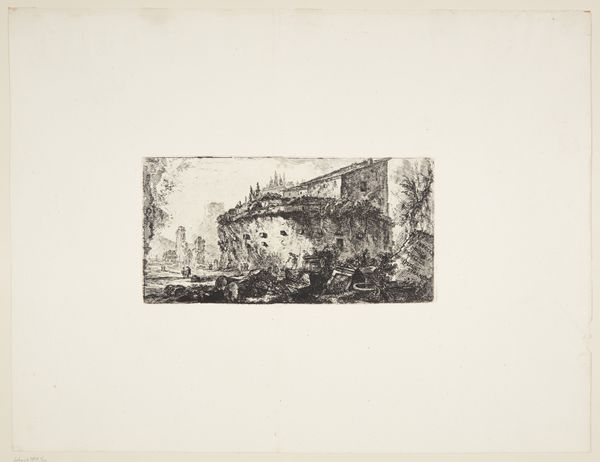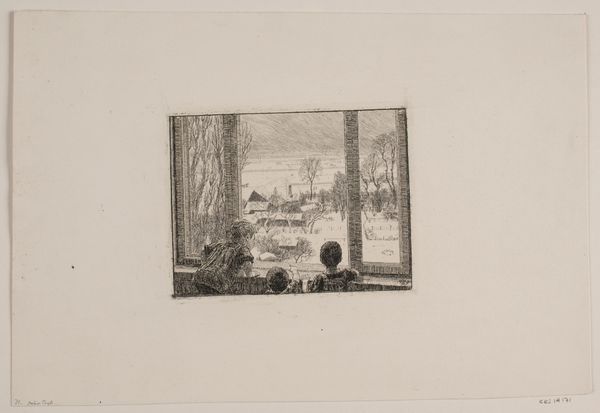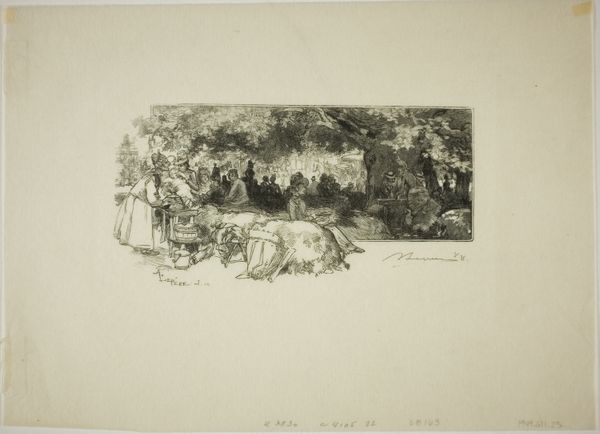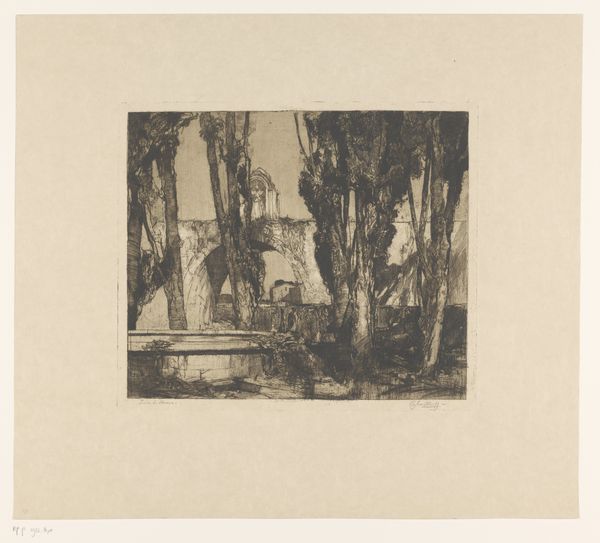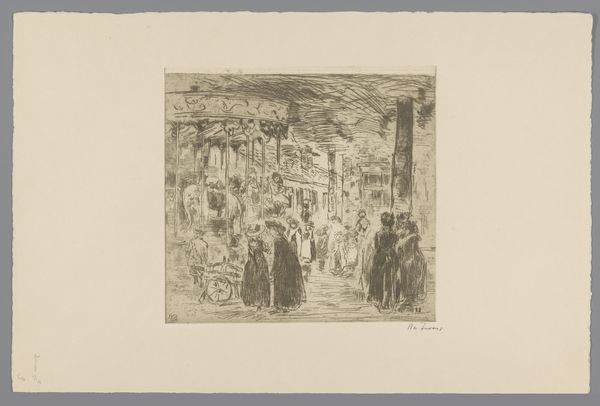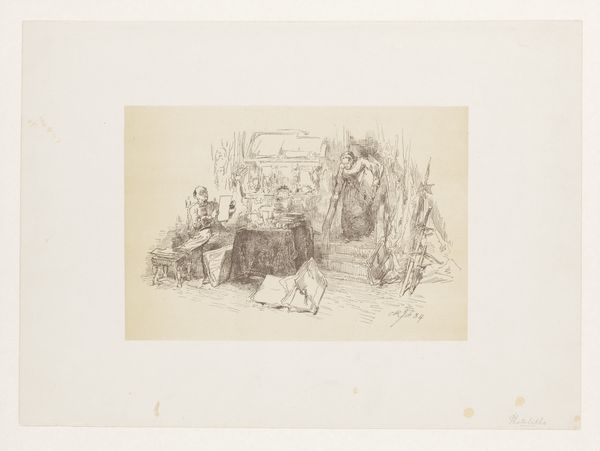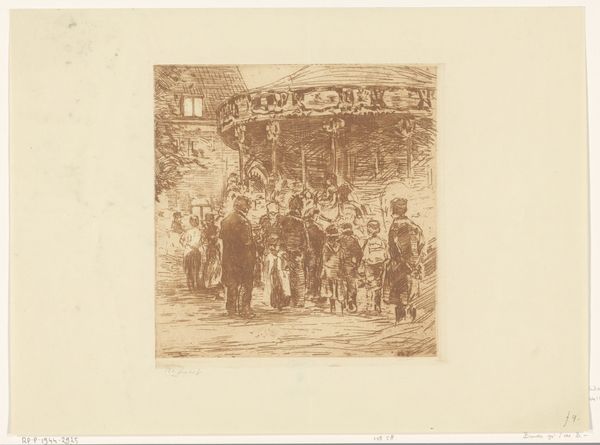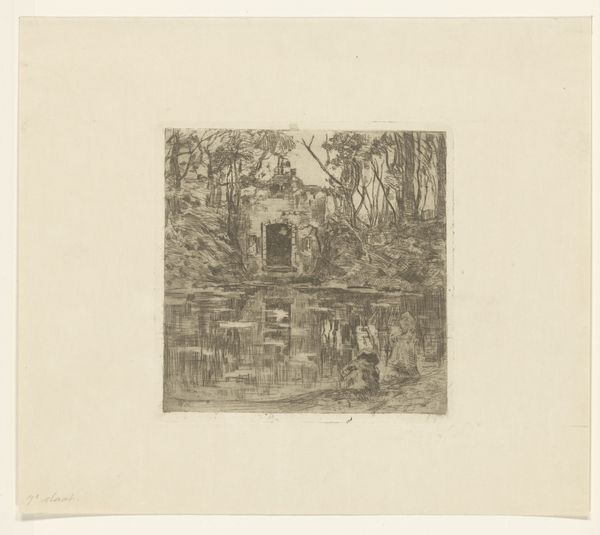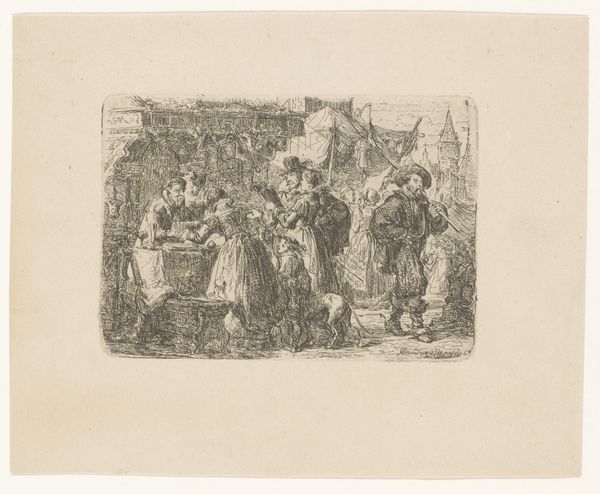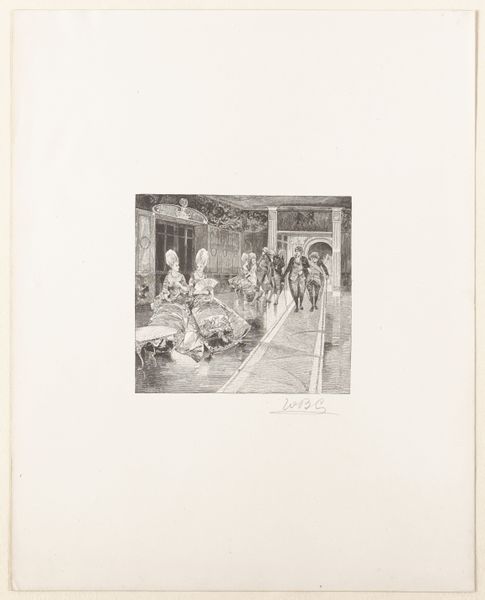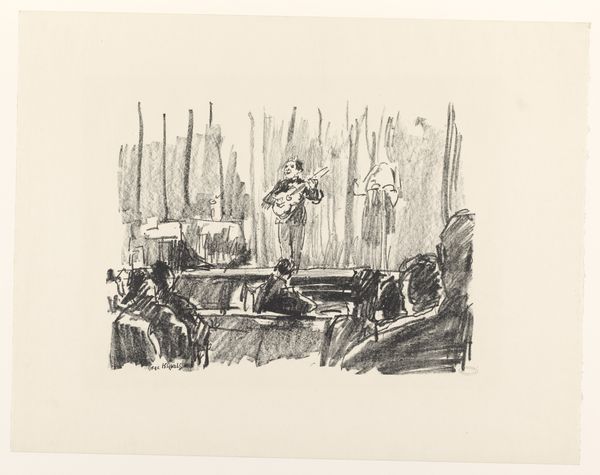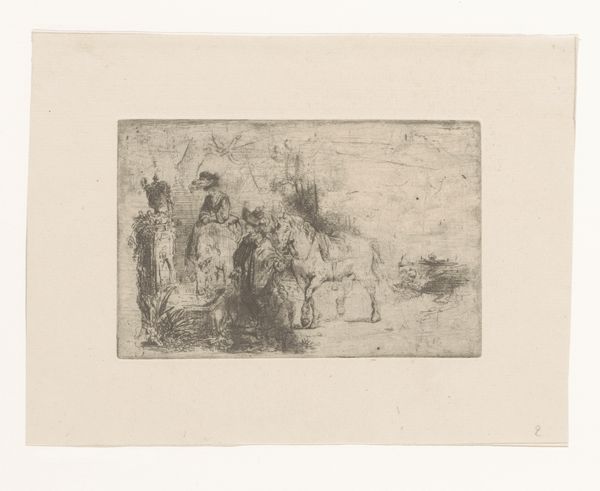
print, etching
# print
#
etching
#
landscape
#
realism
Dimensions: 145 mm (height) x 210 mm (width) (plademaal)
Editor: We're looking at "Torv i Sulmona," an etching from 1886 by Edvard Petersen. The detail captured in this print is really captivating. The scene feels quite balanced and ordered. What strikes you most about the formal composition? Curator: The architecture anchors the scene with its orthogonal certainty, doesn’t it? Petersen juxtaposes that structural stability with the organic lines of the trees and figures. Note the fountain. Its placement provides a strong central focal point, but its circular form softens the surrounding geometry. Do you perceive a dialogue between these shapes? Editor: I see how the curves of the fountain and the bending figures offer a counterpoint to the rigid buildings. But I’m curious, why etching? What does the medium bring to the image? Curator: The medium is paramount. Etching lends itself to finely wrought detail, crucial for establishing tone and texture. See how Petersen uses hatching and cross-hatching to describe form and space, and the subtle variations in line weight that create a sense of depth. How else does technique inform content, do you think? Editor: It’s interesting. The sharp detail contrasts with the hazy atmosphere. The softness almost feels Impressionistic, while the precision leans toward realism. The contrasts add some visual complexity to the print. Curator: Precisely. The print straddles those movements, synthesizing observation with an almost abstracted visual language, due in no small part to Petersen's considered application of tone and line. Editor: Looking closely, it's easy to appreciate the details and artistic strategy. It does prompt you to consider those formal aspects more carefully. Curator: Yes, understanding the structural principles often unlocks deeper understanding of a work's purpose.
Comments
No comments
Be the first to comment and join the conversation on the ultimate creative platform.


